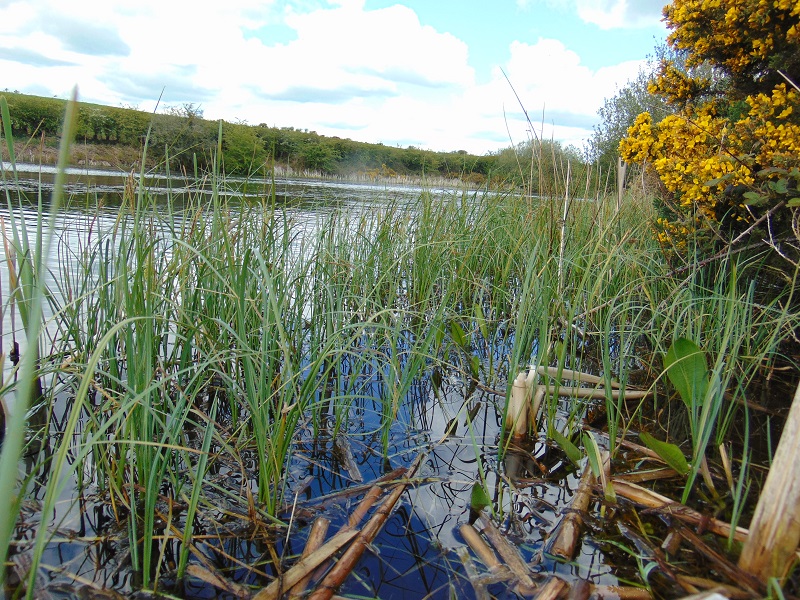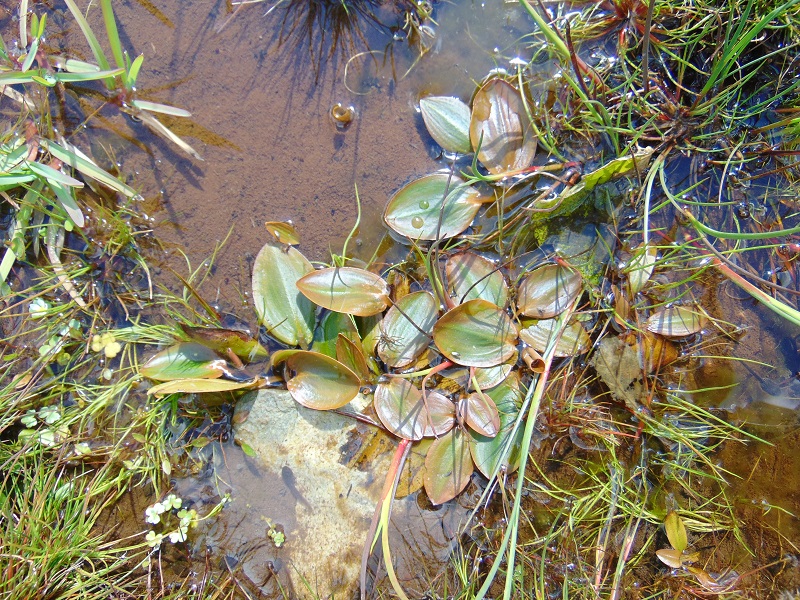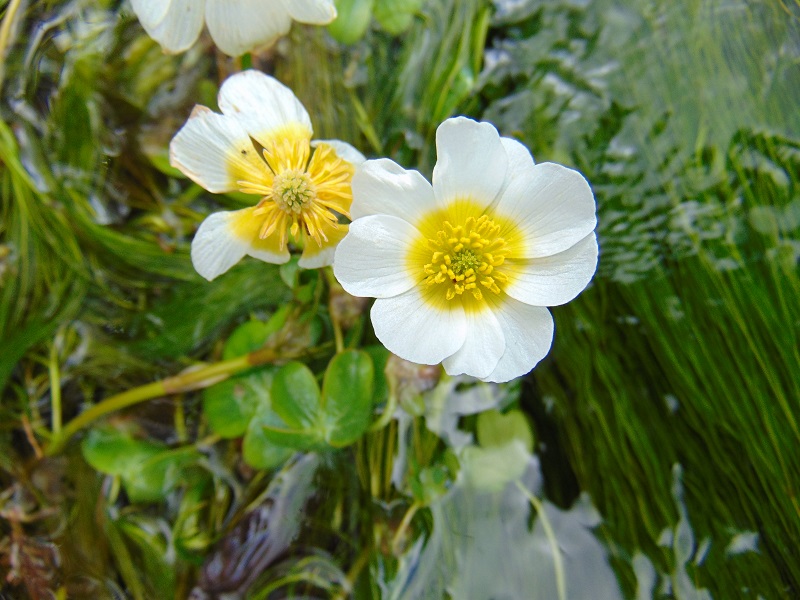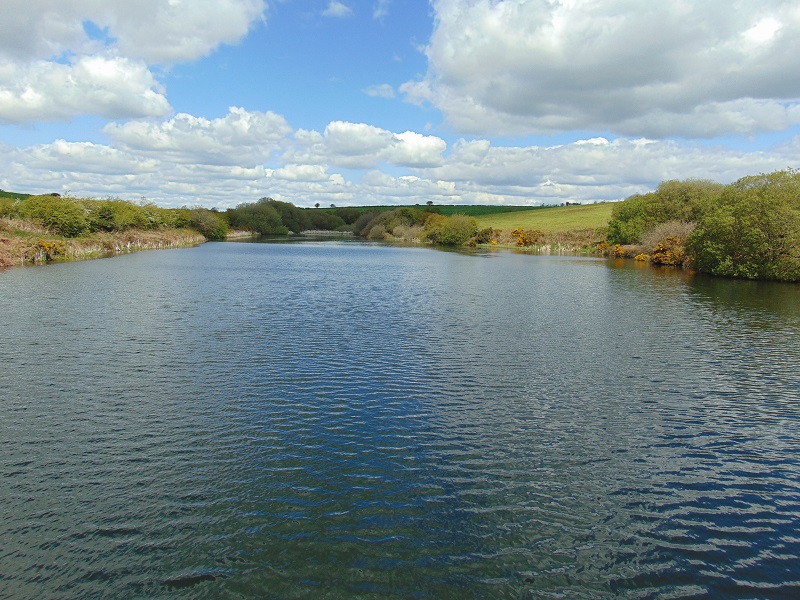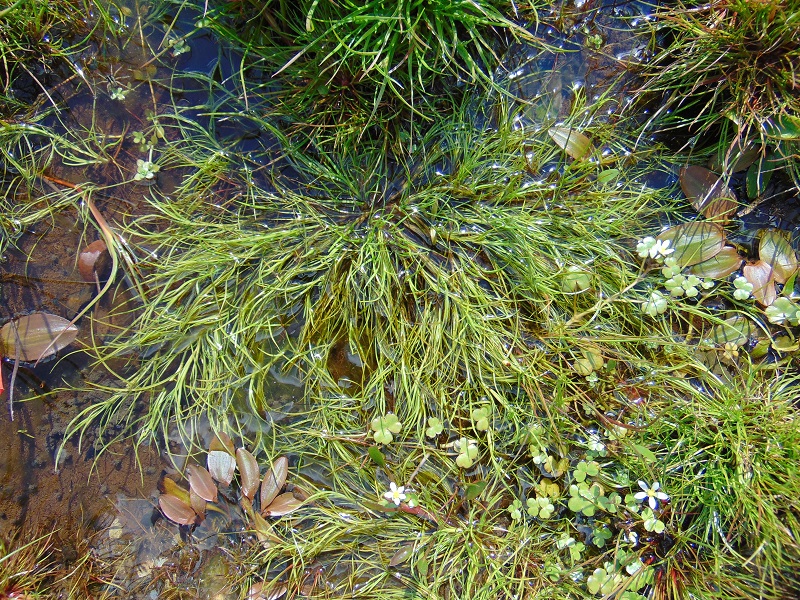The Aquatic Plant Project was launched in 2019 across Ireland with the aim of improving aquatic plant identification skills and increase recording. This included a huge campaign of training and recording days, resulting in thousands of new records. We continued the project in 2020, 2021, 2022 and 2023 with new opportunities for people to learn about aquatic plants and get involved with recording.
The Aquatic Plant Project will continue through 2024, thanks to continued funding from NPWS. Webinars are recorded and the videos are free to view on the Aquatic Plant Project playlist.
The 2024 programme
The first Aquatic Plant Project event of the 2024 season was a series of two identification workshops at the National Botanic Gardens, Glasnevin, Dublin, led by aquatic plant expert Nick Stewart on 10th and 11th February.
The workshops covered several taxa that can often be confusing, including Myriophyllum, Potamogeton and Sparganium. Nick gave fantastic presentations on these taxa and the key features of the various species, which (by kind permission of Herbarium staff) were then demonstrated using herbarium specimens. A great (and educational!) time was had by all who attended.
A webinar (in two parts) was held on 13th July on the identification of floating-leaved aquatic plants - see videos to the right.
Seven field days were held during the summer, in Co. Limerick, Co. Kerry, Co. Kildare, Co. Offaly and Co Galway. These combined training in collecting and IDing specimens, with surveys for some rare species not seen at these sites in recent years. They also presented an opportunity to use our new underwater drone to help survey for some difficult-to-access species!
If you require more information on the Aquatic Plant Project in Ireland (which is generously funded by NPWS), please contact the Ireland Officer.
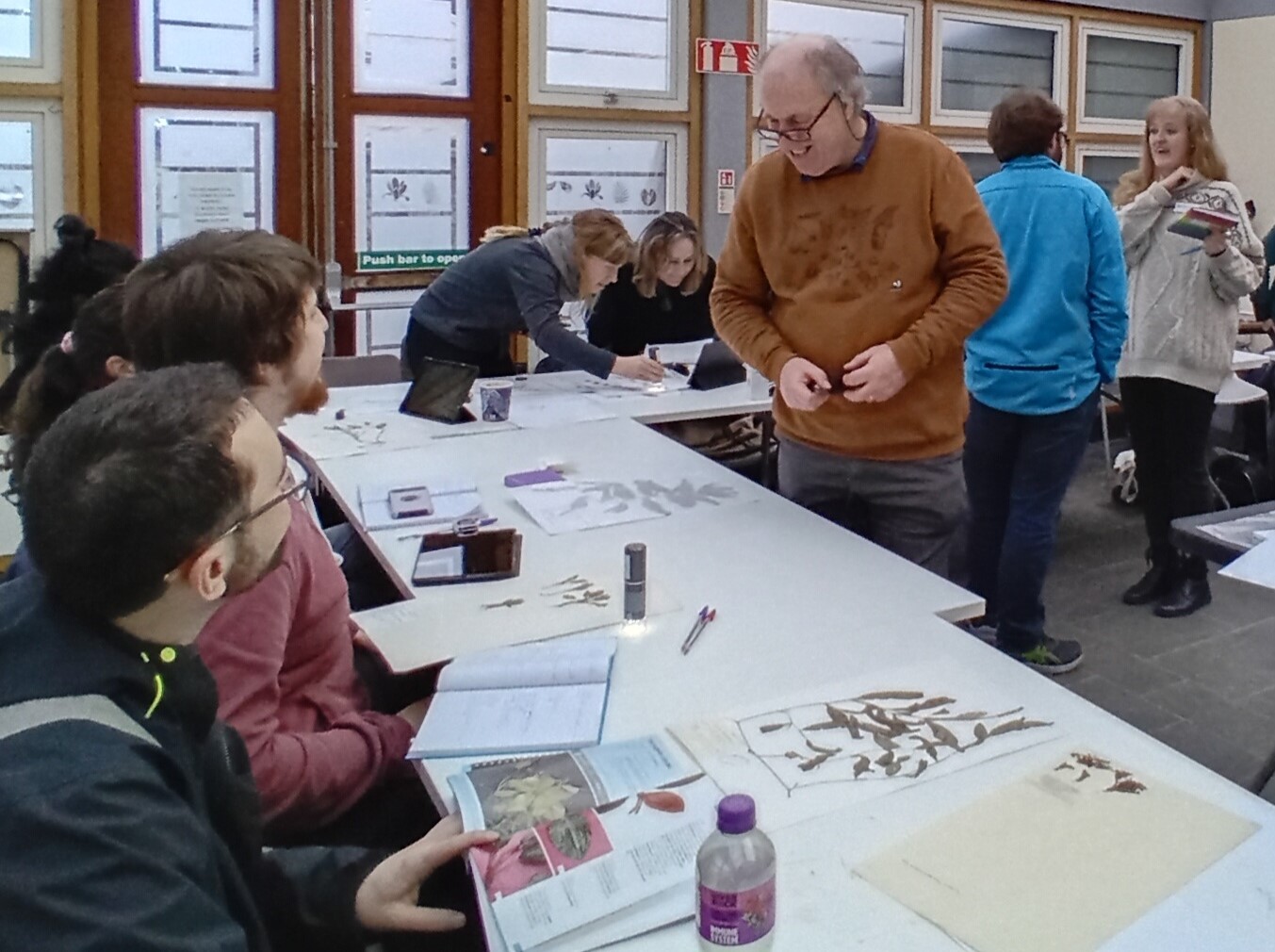
The 2023 programme
Thanks to renewed funding from NPWS, the 2023 programme began with two webinars, now available on YouTube, presented by aquatic expert Nick Stewart, on Identification of stringy-leaved aquatic plants and Identification of feathery-leaved aquatic plants.
Six field days were held this year, attended by over 60 botanists from across Ireland:
Saturday 29th July - Gort, Co. Galway
Saturday 19th August - Pallas Lake, Tullamore, Co. Offaly
Sunday 20th August - Lough Sheelin, Tonagh, Mountnugent, Co. Cavan
Saturday 26th August - Lough Ennell, Rochfort Demesne, Co. Westmeath
Sunday 27th August - Mass Lough, Ballinakill, Co. Laois
Sunday 8th October - Lough Talt, Co. Sligo
The 2022 programme
The 2022 programme included three webinars presented by Nick Stewart. Each presentation was followed by a question and answer session, and then by a short additional talk.
All the videos are now available online:
- Introduction to Broad-leaved Pondweed ID
- Introduction to Narrow-leaved Pondweed ID
- Introduction to Bladderwort ID
- Introduction to Hornwort and Water Milfoil ID
- Preservation of aquatic plant specimens
- How to make a grapnel
A series of field days was also held in a range of locations around Ireland. The aim of the days was to improve identification skills and gather records in a range of aquatic habitats. Thanks to the generous funding from the Irish National Parks & Wildlife Service the events were free.
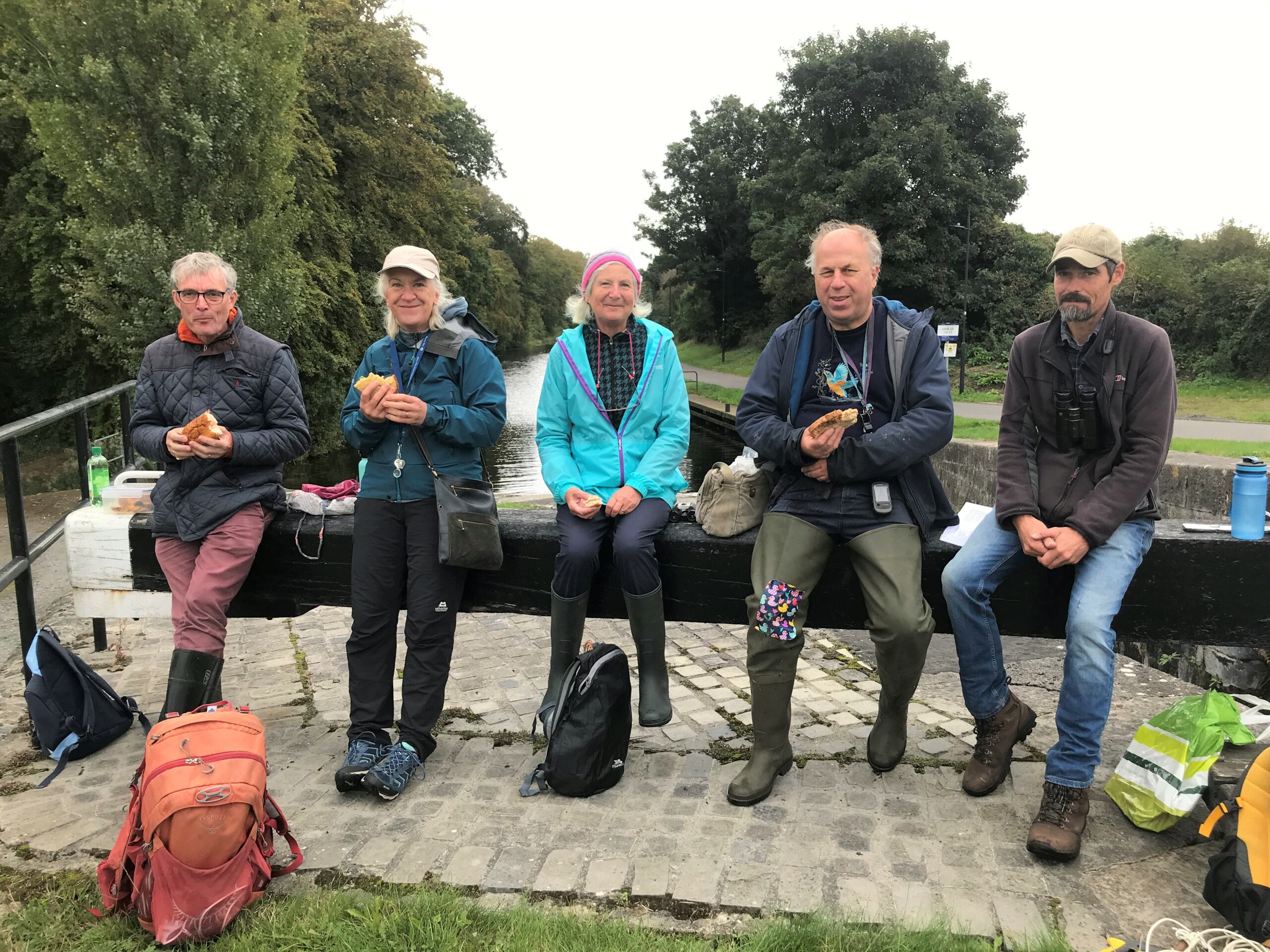
The 2021 programme
- Our first event was a sedge & wetland plant training day on the 2nd July, led by John Faulkner, visiting sites on the Cavan - Monaghan border.
- We held a webinar on Water-starwort Identification on the 5th July. It covered all Water-starworts (Callitriche spp.) you are likely to encounter in Ireland - and Britain! Watch the video.
- On 10th July we learned how to identify Water-crowfoots. Watch the video.
- On 28th July we held a field aquatic plant training day with Cilian Roden & John Conaghan. We visited a site southwest of Carraroe, Connemara, Co. Galway to look for and survey Najas flexilis (Slender Naiad), and learnt how to identify pondweeds (Potamogeton spp.) and other aquatic species - including Potamogeton alpinus (Red Pondweed).
- Our aquatics expert Nick Stewart led field training sessions in Cork, 21st-23rd August; in Waterford, 28th-29th August; and in Co. Kilkenny (in the Inistoge-Thomastown area) on 30th August.
- The final event of 2021 was an Introduction to Broad-leaved Pondweeds webinar by Nick Stewart on the 23rd October.
The 2020 programme
We held two webinars led by aquatic plant expert Nick Stewart on Aquatic Plant Identification:
- Introduction to Aquatic Plant Identification. This webinar covered the main growth forms of aquatic plants, the key features you need to consider, resources to help with identification, and equipment used for sampling. Watch the recording. View the slides.
- Stonewort Identification. Charophytes, or Stoneworts, are complex aquatic green algae which can be tricky to identify, but Nick will guide us through the process. Watch the recording. View the slides.
All our aquatic plant Handbooks are now available as eBooks. View the Aquatics Collection here.
Small floating aquatics
Large floating-leaved aquatics
Stringy-leaved aquatics
Feathery-leaved aquatics
Spiky-rosette aquatics
Bladderwort Identification
Narrow-leaved Pondweed Identification
How to make a grapnel
Broad-leaved Pondweed Identification
Preservation of aquatic plant specimens
Water-crowfoot Identification
Water-starwort Identification
Introduction to Aquatic Plant Identification
Stonewort Identification
Resources
Downloadable resources to print:
- Nick Stewart's simple guide to identifying aquatic plants vegetatively.
- Nick Stewart's Key to Common Stoneworts
- Nick Stewart's keys to aquatic genera including Potamogeton, Myriophyllum.
- Nick Stewart's Intro to Aquatic Plant ID slides for personal study.
- Nick Stewart's Stonewort ID slides for personal study.
- BSBI's Charophyte page.
- BSBI's Plant Crib page - includes sections on Alisma, water-plantains; Ceratophyllum, hornworts; Elodea, waterworts; Isoetes, quillworts; Lemna, duckweeds; Luronium, floating water-plantains; Myriophyllum, water milfoils; Nitella, stoneworts; Nuphar, yellow water lilies; Potamogeton, pondweeds; Utricularia, bladderworts Fine-leaved aquatics; Lake-bottom isoetids (quillworts); Waterlilies
- How to make a grapnel
- Glossary from Chris Preston's Pondweed Handbook
Books (for home study - don't ruin them in rivers and ponds!)
- BSBI handbook on Stoneworts/ Charophytes (1986) J.A. Moore, available as an eBook for £10.00 or as a physical book from Summerfield Books.
- BSBI handbook on Pondweeds (1995) C.D. Preston, available as an eBook for £14.00 or as a physical book from Summerfield Books.
- BSBI handbook on Water Starworts of Europe (2008) R.V. Lansdown, available as an eBook for £10.00 or as a physical book from Summerfield Books.
Contact Details
For more information about the project, contact APP Events Co-ordinator Polly Spencer-Vellacott. To find out more about botany in Ireland, including news, events, and local groups, check out the BSBI Ireland Webpage.
